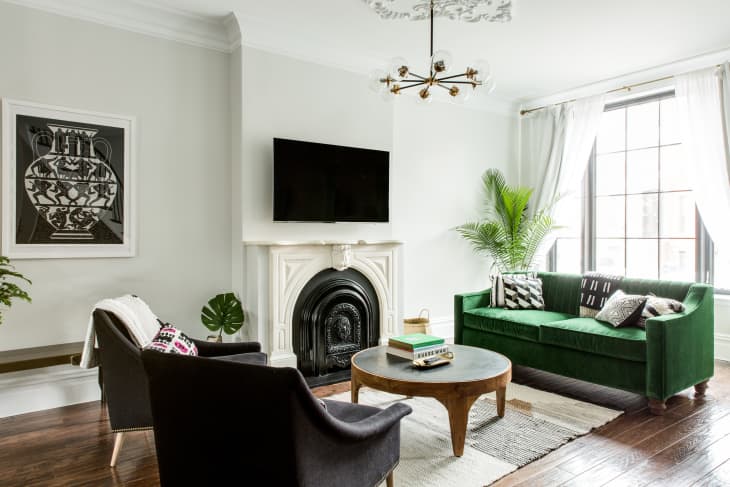5 Classic Design Rules to Absolutely Never Break

Of course, we’re all for breaking design rules when it works for you (which could very well be all the time), however, sometimes having a few guidelines to follow can give you the freedom to hone your creativity in other areas. Here’s to measuring twice, cutting once, and doing you with confidence! Here are five interior design rules to consider if you want to do things right the first time around.
1. Avoid Awkward Curtain Length
Hanging curtain panels that are too short or too long is the equivalent of dressing yourself in ill-fitting clothing. “Measure twice, cut once” applies here—take the time to prep by measuring and marking your rod placement before you break out the scissors and sewing machine.
Here are two simple rules regarding curtain length that almost always work on any window:
- Hang your rod level, at least half way between your ceiling and the top of your window.
- Measure (twice!), cut and hem your panels so they just graze the floor when hung.
For more tips, check out our Dos and Don’ts of Hanging Curtains.
2. Choose Properly-Scaled Rugs
If you haven’t made this mistake, you’ve seen it made many times…and understandably so. Rugs can be expensive, and the bigger they get, the more expensive they are. However, while price is definitely something to consider, we’d venture to say money isn’t always the cause behind this epidemic (too strong?). Maybe you found the most gorgeous vintage kilim rug that you’re convinced you can “make work”, or your favorite home decor store is having a sale on that rug you’ve been obsessing over…but the only one left is a 5′ x 7′. DON’T DO IT (unless you plan on layering it over a properly scaled rug). No rug is better than a seemingly miniature rug that is stunted by all of your human-sized stuff.
A good rule of thumb is to choose a rug that is the proper scale for your space that all of your existing furniture fits on (see illustration). Natural fiber rugs like jute and sisal, as well as most IKEA rugs, provide great affordable large-scale options.
3. Picking a Cohesive Color Palette
Unless you’re designing the Madonna Inn’s hodgepodged “What’s Left” Room, making a space feel cohesive is probably your main priority when consider a design scheme. Choosing a color palette and working it in evenly throughout a room is a foolproof way to ensure your space will feel put-together.
While deciding on a color palette may be the trickiest part, once you’ve got one nailed down it can actually make shopping for your space so much simpler. There are a number of different approaches you can take when picking out your palette, so we recommend you start with Emily Henderson’s step-by-step guide, and put your own creative spin on it (like the 3/3 vertical rule or an Analogous approach).
4. Hanging Art Work at Eye Level
If you’ve got a blank wall and a stack of art that are begging to meet, resist the urge to pick up your hammer without a little prep work. A good rule of thumb is that most art work looks best hung where the center of the art is between 57″-60″ (around eye level for most people). From there, gallery walls look best hung in a uniform grid where all the frames are the same size, or with one focal piece surrounded by a variety of sizes.
While eye level placement is key, space between pieces and how they relate to each other can be tricky too. For more tips, check out the handy illustrated guide above or click over to our Dos and Don’ts of Hanging Art.
5. Varying Your Light Sources
When all of your lighting comes from one bright source in one location (i.e. overhead recessed lighting), it falls flat. Placing multiple soft lights in a variety of locations enhances the ambiance and creates depth and warmth.
“Lighting will elevate the mood of any room,” says Mat Sanders of Consort Design.” Be sure to have light coming from multiple sources, not just overhead. Find creative places for an extra floor lamp, sconce, or empty corner where a small table lamp could reside for added glow.”
*Re-edited from a post originally published 02.01.2018 -BM